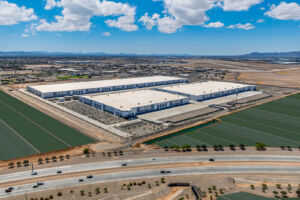The economy may be better in 2011 than it was in 2010, but the road to full recovery will remain long and full of potholes. But hey, it could be worse. It could be 2009.
That’s according to economist Elliott D. Pollack, CEO of Elliot D. Pollack & Company. Pollack was speaking at the Greater Phoenix Chamber of Commerce’s Economic Outlook 2011 breakfast today at the Arizona Biltmore Resort & Spa.
Pollack said population growth in the Valley should settle at 1 percent this year and rise to 2 percent in 2011. Net job growth will contract by 1 percent in 2010 and climb by 2 percent in 2011. Retail sales will increase 1 percent this year and rise by 8 percent next year. Building permits will increase by 20 percent in 2010 before jumping 50 percent in 2011.
In summarizing his 2011 forecast for the Valley, Pollack read a laundry list of good news and bad news:
- The housing market is at or past bottom, but there are many negatives still trumping a full recovery, most notably slower migration flows.
- The commercial real estate market is at or past bottom, but recovery will be slow and “take a long time.”
- Sales tax revenues are no longer falling, but they aren’t growing quickly enough to fix the state’s battered budget.
- Retail sales have past bottom and there is pent-up demand among consumers, however, those same consumers are still so worried about personal debt that they will continue to curb spending, thus thwarting a big recovery.
While Pollack said the Valley’s economic recovery will be “painfully slow,” he points out that a recovery is indeed underway. For example, the state’s standing in employment growth compared to the rest of the nation is gradually improving — but only after a precipitous decline. In 2006, Arizona ranked second in the nation in job growth; that dropped to 22nd in 2007; 47th in 2008; and 49th in 2009. Up to July of this year, the state had moved up to 42nd in job growth.
Another indication that the Valley’s economy is showing improvement is in the number of economic sectors that have shown net job gains. Of the state’s 12 major economic sectors, five have shown net job gains so far this year (education and health services; trade; leisure and hospitality; professional and business services; other services). That compares to the same time last year, when no economic sectors reported net job gains.
But, Pollack pointed out again, the Valley and state can’t expect the robust and recoveries that have accompanied past recessions.
He says the Valley’s housing market continues to be weighed down by:
- Weak job growth
- Tough underwriting standards
- Negative home equity
- Loan modification failures
- High foreclosures
- Option ARMs (adjustable rate mortgages) peaking in 2011
In terms of equity, 51 percent of houses in the state have negative equity. The national average is 23 percent. Such negative equity severely curtails people’s ability to buy and sell homes. In addition, supply still outstrips demand in the single-family home market, with an excess inventory of houses somewhere between 40,000 to 50,000 units, Pollack said. A balance between supply and demand will not be fully achieved until about 2014, he added.
The picture is bleaker for the commercial real estate market, with delinquencies on loans still very high. In the office market, Pollack cited forecasts from CB Richard Ellis that said vacancy rates would peak at 25.6 percent in 2010 before dropping to 23.9 percent in 2011. As Pollack pointed out, there currently is no multi-tenant office space under construction in the Valley. In fact, he expects “no significant office building in Greater Phoenix for the next five years.”
Industrial space vacancy rates are faring only slightly better, with CB Richard Ellis predicting year-end vacancy rates of 16.4 percent for 2010 before falling to 15.2 percent in 2011. As for the retail market, the vacancy rate will rise to 12.3 percent in 2010 and hit 12.9 percent in 2011.
For office, industrial and retail commercial real estate, Pollack said he did not expect vacancy rates to reach normal levels until 2014-2015.
Still, Pollack maintained that the economic outlook for the Valley “remains favorable,” thanks to the recovering national economy, increased affordable housing in the Valley, a rise in single-family home building permits, unemployment bottoming out, consumer spending improving and continued problems in California.



